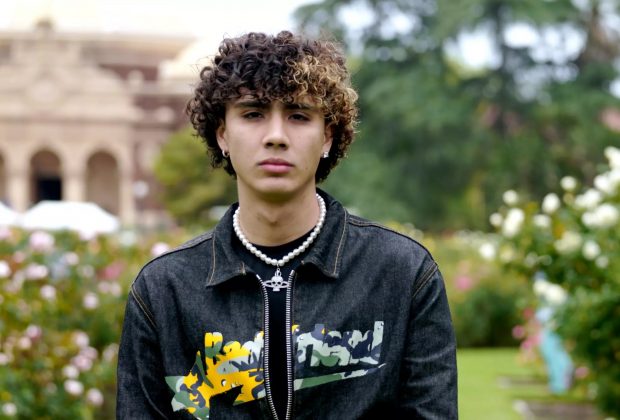By Reed Johnson | Los Angeles Times | AUG. 4, 2023 | Photo by Raul Roa
DannyLux’s first guitar was a castaway that his father plucked from the trash while driving garbage trucks in Palm Springs. Growing up, the young musician vibed to an unruly mezcla of Maná, “a lot of Pink Floyd,” regional Mexican music and The Beatles, honing his earnestly introspective vocal persona.
“My mom even has a video of me singing ‘Let It Be’ as a little kid, and the guitar is all huge on my body,” Danny, 19, said in a recent interview, laughing at the memory of himself as a Paul McCartney proxy. “I couldn’t even reach to play the guitar, but I was still playing it!”

Now he’s braiding those elements into a songwriting style that has partnered him with Gen-Z regional Mexican groups like Fuerza Regida, Eslabón Armado (both recently in L.A.) and everyone’s favorite artist of the last 15 minutes, the omnipresent Peso Pluma.
Collectively, these artists are fashioning a regional Mexican music renaissance for the Age of TikTok. Most are in their late teens or early twenties, Mexicans as well as bilingual Mexican Americans from places like South L.A. and the Inland Empire, accustomed since birth to crossing sonic borders.
The biggest push factor in their surging popularity is the exponential growth of the U.S. Latino population, which skews younger than the nation as a whole. But this reimagining of centuries-old music might not have happened if not for two interrelated phenomena: the COVID pandemic and the explosion of TikTok and online music tutorials.
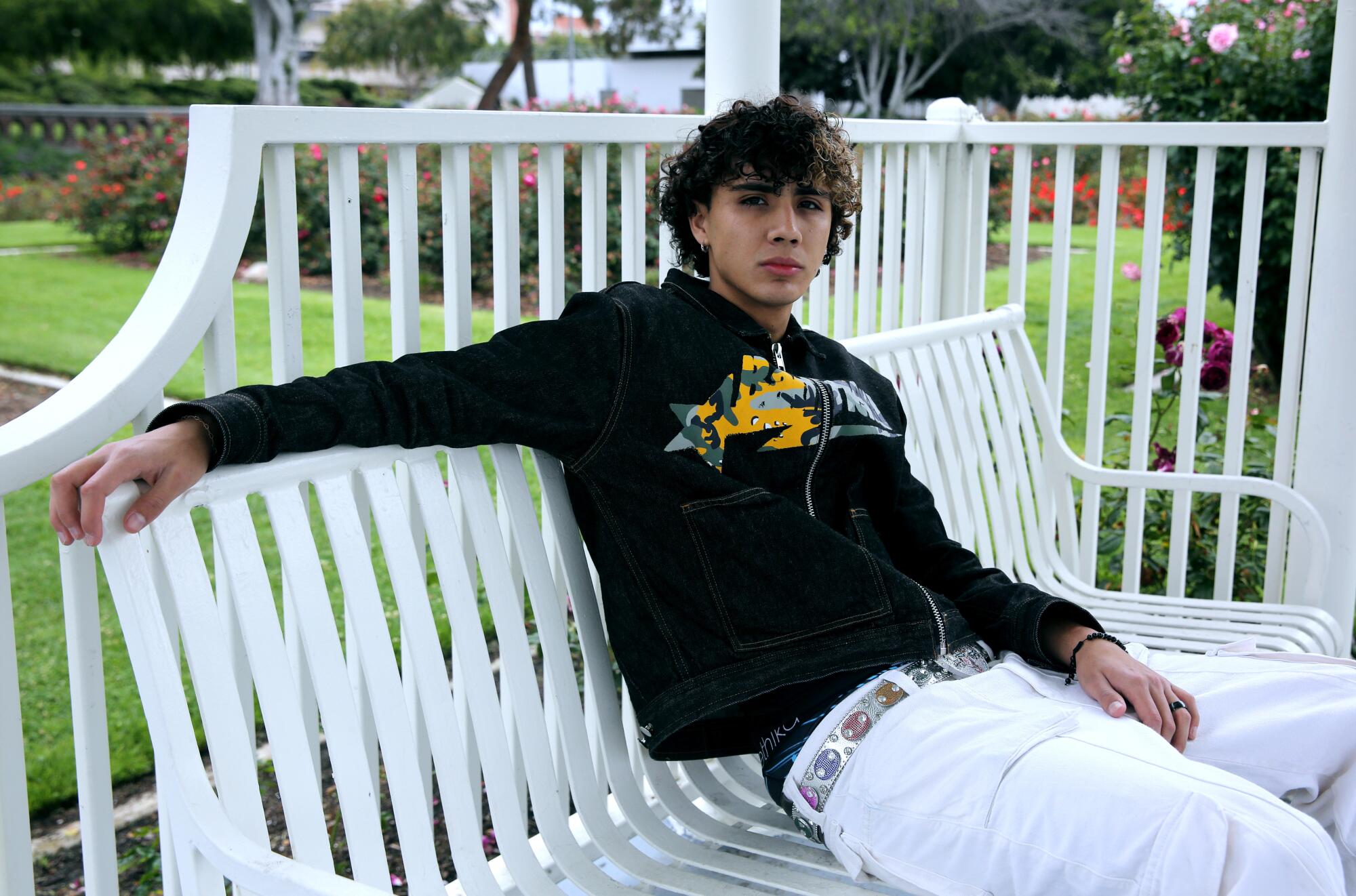
After Danny was kicked off his school soccer team due to his slumping GPA, and confined at home by the coronavirus, he would cry every night and beseech God, “What am I supposed to do? I want to be good at something!” Then he started posting music covers and, later, original songs, and his phone blew up. Now he’s poised to release his first full-length album on Warner Latina, launching a tour of Mexico, and will appear with Interpol and The Red Pears October 30 at the Greek Theatre.
The Internet also was a meeting ground for the all-female, feminist trio Conexión Divina, which performed at last spring’s Coachella Festival and recently released its exquisitely melancholy debut album, “Tres Mundos,” including a collab on the song “Si Te Vas” with the L.A. “sad sierreño” trio, Los Aptos.
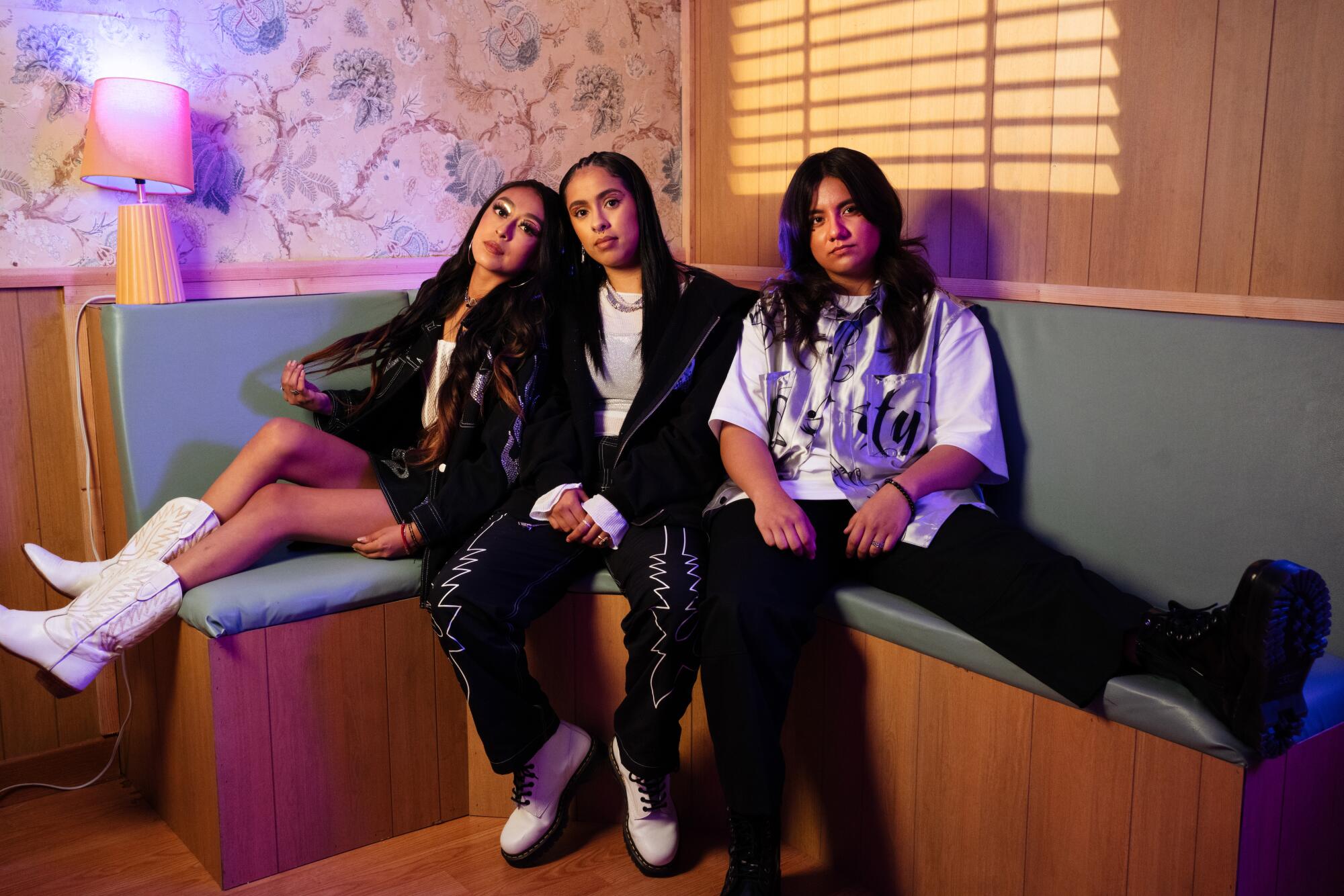
Conexión’s name alludes to the Vicente Fernández song “Mujeres Divinas” and also to how the
band merged forces via social media. Ashleee Valenzuela, 23, its Arizona-bred requinto guitar player and principal songwriter, first connected online with bajo guitarist Sandra Calixto, a 20-year-old Texan who learned to play from YouTube videos. After Calixto moved to Arizona, they started jamming after wrapping up their day jobs at Walmart and Subway.
Then one day online they spotted Liz Trujillo, 18, a South L.A. native who’d been posting soulful covers of Ivan Cornejo and Los Dareyes de la Sierra on TikTok, and met up when Calixto and Valenzuela took a seven-hour Greyhound bus ride to L.A., where all three now dwell.
“I think our genre is in its prime right now,” says Trujillo, the band’s lead singer. “Right now there’s a lot of different instruments being added onto the music. There’s not a particular sound to it, there’s a variety of sounds that you can incorporate.” The trio believes that by combining sierreño, corridos tumbados and other styles with psychological candor, young performers are helping birth a vital new musical idiom.
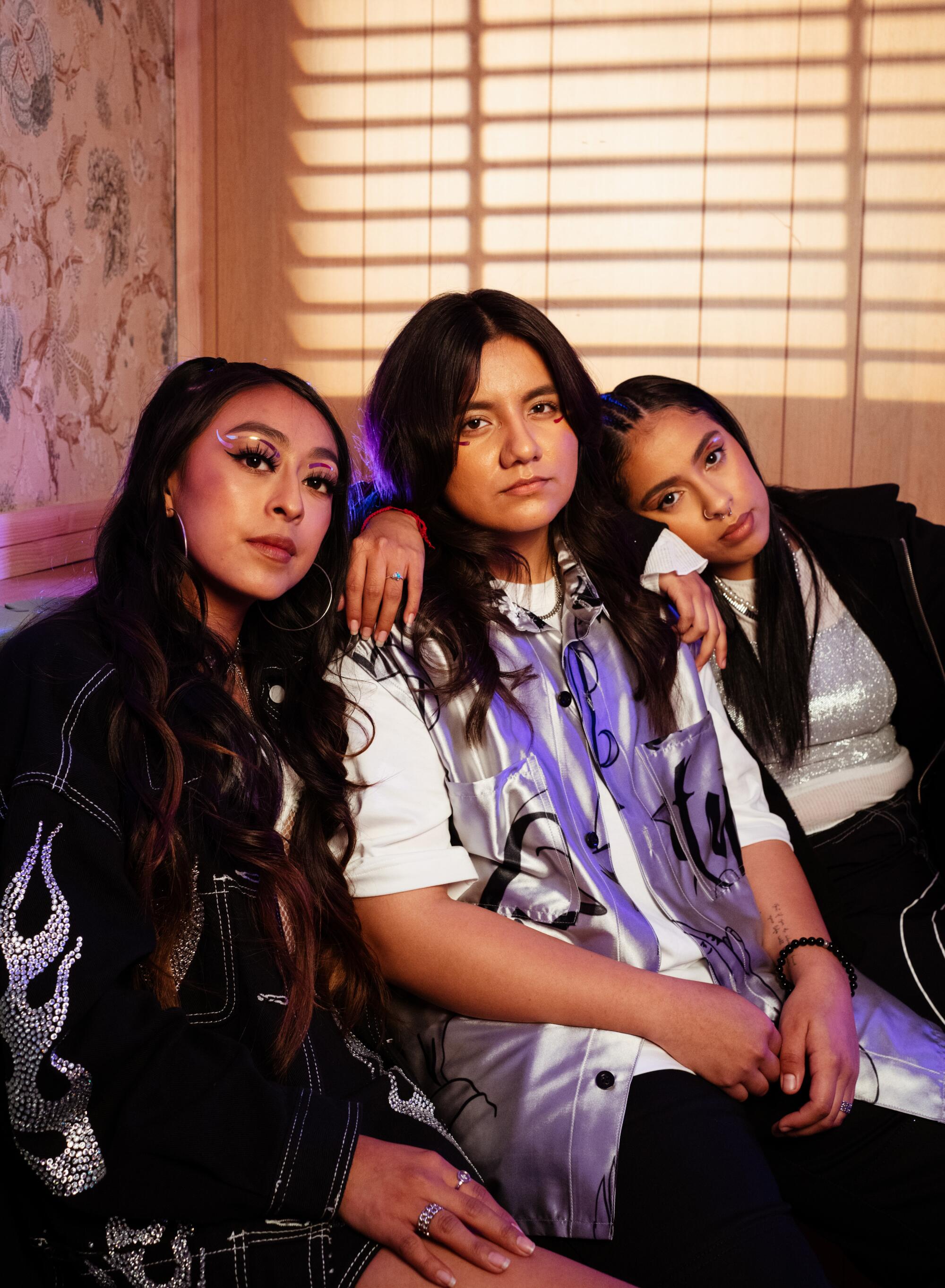
“We’re the new school, but it’s still like Mexican music,” Valenzuela said. “I feel like I’m evolving every time I write a new song and I feel like I’m learning how to put my emotions more into it and be more vulnerable.”
“Tres Mundos,” the album title, refers to the group’s tripartite identity as Mexican, American, and Mexican American “like as a third world,” Calixto explained.
“Because people who are Mexican American, they don’t really relate to people who are just American or Mexican. They don’t relate to us either,” Calixto continued. “And so we don’t feel part of their world, and so we kind of made our own. Another reason for ‘Tres Mundos’ is we all represent three different types of feminity. I’m more feminine, Ashlee’s kind of in the middle, and Liz is more tomboy-ish. But at the end of the day we’re all women.”
The roots of some regional Mexican music date back even before the Spaniards big-footed their way into Tenochtitlan. It’s a loose, baggy term encompassing everything from the mariachi of Jalisco to the brassy, quasi-martial banda of Oaxaca and Sinaloa.
Among its infinite sub-genres is the calentana of the tierra caliente (hotlands) straddling Guerrero and Michoacán, and the elegantly rustic son jarocho of southern Veracruz, which blends arana and requinto guitars with diatonic harps, the cajón — a boxy percussion instrument — and the quijada, a donkey’s jawbone played with a scraping stick (hinting at its Afro-Indigenous origins).
Back in the day, circa 1930-1960, regional music of all stripes was radio-broadcast throughout Mexico, part of the federal government’s attempt to construct a unified national culture following the catastrophic upheaval of the Mexican Revolution of 1910-1920. But many of these regional sub-genres had been nearly rendered endangered species by the crushing popularity of rock, pop and later reggaeton and cumbia.
As a result, over the decades much of the music’s reimagining has shifted to Mexico’s U.S. border zones and inside the United States. Ritchie Valens rocked out with his cover of “La Bamba,” a son jarocho classic. East L.A. vinyl heroes Los Lobos (who also memorably covered “La Bamba”) launched a bold new phase of their career with their 1988 Tejano/Mariachi folk album “La Pistola y El Corazón.” Selenaand Jenni Rivera both crafted emotive varietals of regional Mexican music.

The Tijuana-based Nortec Collective, who grew up hearing electronica on San Diego radio, synthesized snatches of accordion, 12-string guitar and tuba on their handheld computers to create a Norteño-Techno hybrid — Baja California meets Munich via Detroit. Younger tijuanenses like Nathan Galante, who started writing songs in elementary school, is now riding what he calls the “revolutionary” new wave of regional Mexican music propelled by Spotify-storming artists like Fuerza Regida and Peso Pluma, the Jalisco singer-rapper whose hit “Ella Baila Sola” with Eslabon Armado broke into the top 10 of Billboard’s mainstream Hot 100 — a first for a regional Mexican song.
Several other L.A. bands, among them the Grammy-winning Chicano rockers Quetzal (who perform Aug. 19 at La Plaza de Cultura y Artes) and La Santa Cecilia(on stage recently at the Levitt Pavilion at MacArthur Park), have drunk from the rich aquifer of regional Mexican music.
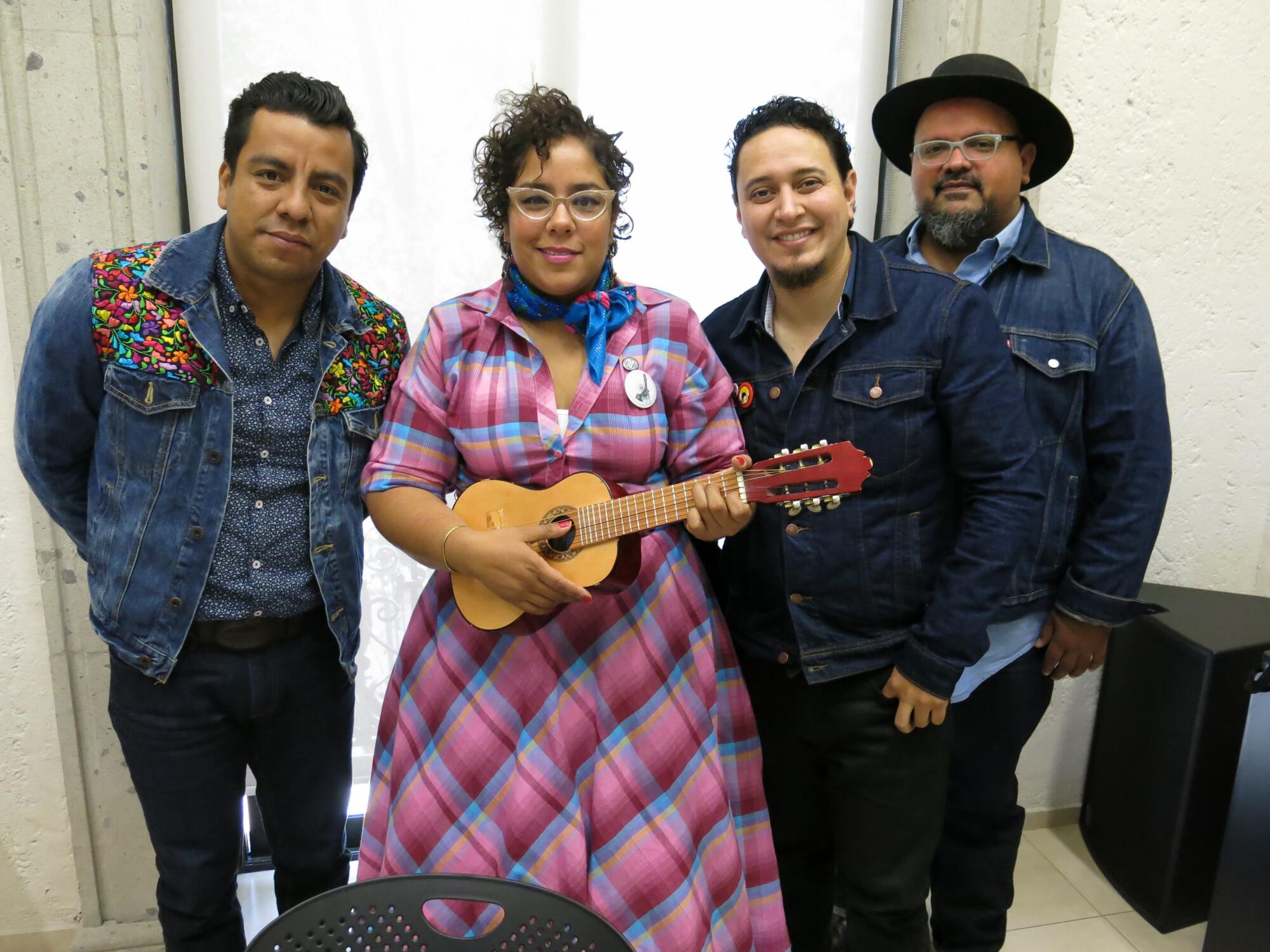
Perhaps the highest complement for the nueva generación comes from veteran regional Mexican performers like Jorge Medina, the Sinaloa tenor best known as the former lead vocalist of the Mexican super group La Arrolladora Banda el Limón de René Camacho.
Medina’s own musical schooling included banda, Norteño, mariachi, Juan Gabriel, José José and Vicente Fernández. Now he’s getting into Peso Pluma and Grupo Firme, among others.
“I like those who do very original songs,” he said. “I compare it a lot to cooking, to a dish that you add ingredients to, which makes the dish richer.”

